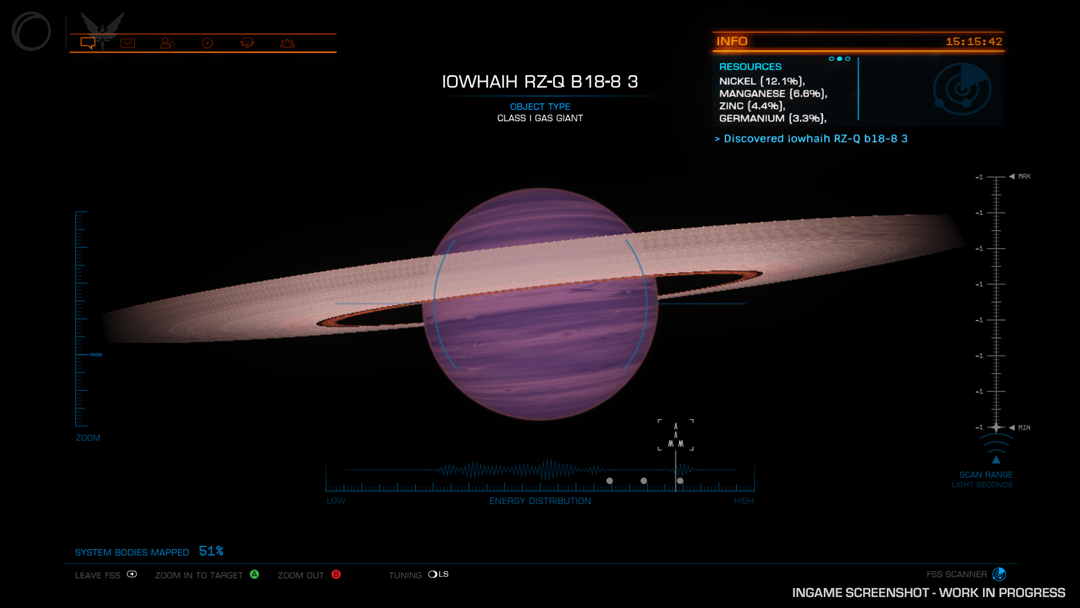Flag planting?
As I see it there are a couple of things that need to happen to make this work. In general the dynamic of making Exploration harder is fine, as long as it's more worthwhile.
I have some thoughts I fancied putting out there. Please feel free to comment.
If you want to keep the immersion aspect alive then I think moving a situation where, from a honk, you can only find the star right in front of you is a bit of stretch. If a computer can fly you across thousands of light years in space, I'd expect that a scanner can at the very least automatically say "I've found at least 8 significant gravity wells in this system that are likely to be planets, possibly with moons, and they're roughly in these places". As many seem to have suggested, that could be represented by showing blanks on the system map, and doing away with the HUD images for planets which are far too much of a giveaway at the moment. How many of us just honk, select each planet and then move on if they don't find any HUD images without the little jigsaw piece at the bottom left that represents an ELW?
Once you have a high level map of the gravity wells then, as I see it you have a couple of options. You can either use the spangly new scanner to find what's out there (which gives you more information than just a honk), or you can fly towards the gravity well and when you get close, honk again. That second honk when you're closer gives you the number and location of any orbiting moons and the like. I think the key here is making the process of finding the location of something and its makeup distinct things. The ADS tells you roughly where something is, the DSS tells you what each thing is and if there's anything interesting to do there.
Which is my second key point. I don't mind putting effort into detailed scanning and probing a planet (it sounds like it could be fun), as long as there's a reasonable chance of finding something genuinely interesting. That might be surface locations with specific materials, or tree formations, or barnacles or any other manner of interesting things that haven't yet been thought of. Explorers want to feel like we're the first to find something genuinely exciting and share our finds with the world. Think Star Trek and going where no one has gone before.
Which brings me to my last point. Why not let us place an actual marker on a planet to say we've been there. I would love to be able to plant a beacon (a 34th Century Flag) to say I had physically landed on a planet with my CMDR name and date/time and for other people finding that planet later to see that beacon when they DSS it. Hell if you want to go the whole hog, why not have the act of planting a beacon make the details for that planet appear for everyone on first honk. That way exploring becomes a community effort and each find becomes of use to everyone else in the galaxy.
I realise the mechanics of this are such that much of it may be impossible to implement given the number of stars and planets and system users, but the 4 salient points are:
1) make it relatively easy to know that "something" is out there
2) give us the option to find it using the new scanner from afar or to fly in the general direction and learn more (for those who don't carry all the best equipment or just want to fly around to look for stuff)
3) make getting the detail harder but more likely to yield genuinely interesting results
4) let us make our mark and share what we find with other players or explorers passing through.
If those steps could be implemented then I think you suddenly have a genuinely interesting proposition on your hands. From what I've seen the current build is not that far off this and much of the above (with the exception of 34th century flag planting) could be done with only minor tweaks.
What do y'all think?



